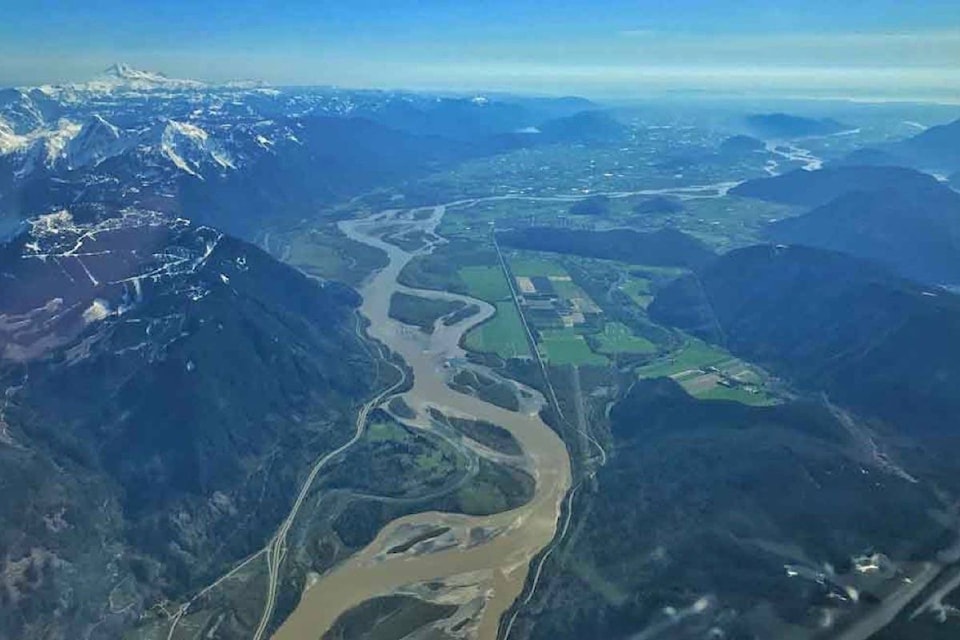Fish from the mighty Fraser River have fed Indigenous people for many millennia. But in recent generations, once-abundant fisheries are in decline as human activity and development around the river increase.
Herrling and Carey Islands are two of only four mid-river major island complexes left in the gravel reach component of the Fraser River between Mission and Hope, now known as the Heart of the Fraser.
This stretch of gravel is crucial habitat for white sturgeon and Chinook, chum, pink, and other salmonids.
The islands and side channels in the Heart of the Fraser are home to a myriad of fish throughout the year and provide essential spawning, rearing, and migratory habitats. And now, lower Fraser fish habitat is under even more pressure from rapid agricultural development within the Heart of the Fraser.
The BC Wildlife Federation is concerned about two bridges proposed for side-channel crossings to Carey and Herrling Islands within this area.
The construction and footprints of these bridges could negatively impact white sturgeon spawning and incubation areas and damage juvenile and adult salmonid spawning and rearing habitats.
The provision of vehicular access to these islands and the large-scale land development that will follow, if approved, will result in wide-ranging and catastrophic damage to this extraordinary ecosystem.
The BC Wildlife Federation and other conservation partners have intervened to save the threatened Heart of the Fraser with the provincial ministry responsible.
The BC Wildlife Federation recently hired a consultant to review the land status and found that no protection for the critical fish habitat exists through land-use plans or riparian area regulations.
Herrling and Carey Islands were once part of Tree Farm Licence (TFL) 43. They were surrendered back to the Crown in 2016 and sold as private lands, retaining Agricultural Land Reserve (ALR) designation in the Fraser Valley Regional District (FVRD) and the District of Chilliwack (DoC).
No forest harvesting plans or land clearing plans for the islands are required by local governments or by the province of British Columbia.
The lands on Herrling Island are not in FVRD’s Official Community Plan designated “Development Permit Areas.”
The Streamside Protection Regulation has not been placed in effect by the FVRD for the Fraser River mainstem, Fraser River back channels or sloughs adjacent to Herrling Island.
No development permits were taken out for the extensive land clearing that has taken place since the sale of the islands.
Loss of habitat quality and quantity of these two islands is a known high risk for the threatened Lower Fraser River white sturgeon.
Also impacted by this habitat degradation are the eulachon and interior Chinook salmon, once abundant Indigenous food fishes, now at risk and with declining numbers returning to spawn in the Fraser.
Even though threatened species rely on the Heart of the Fraser, no clear and consistent guidance exists across federal, provincial, local or First Nations government resource-management sectors that would protect these critical habitats.
That is why the provincial government has undertaken reviews of its environmental assessment processes and of the professional reliance model of managing risk to natural resources.
The BC Wildlife Federation wants clear land-based objectives to be integrated between the Forest and Range Practices Act, the Water Sustainability Act, The Land Act and the Riparian Areas Regulation and other legislation so that all activities follow the same set of rules.
The current situation at Carey and Herrling Islands is a prime example as to why this needs to happen. Capacity must be restored in government to conduct inventory, analysis, and assessments of landscape and watershed functioning.
Objectives for riparian areas, water quality, water quantity, and environmental flow protection are key to the sustainability of fish and wildlife habitat and the populations they support.
In this light, the BC Wildlife Federation recently submitted recommendations to the Professional Reliance Review, currently being undertaken by the province, to insist that there must be a higher level of government oversight to protect public interests, especially when endangered species and habitats which are found at Herrling and Carey Islands are at further risk from development. Recommendations from the government review will be released this spring.
In the meantime, the BC Wildlife Federation has met with Forests’ Minister Doug Donaldson and his senior staff, and have proposed a co-funding purchase of the Heart of the Fraser islands inclusive with First Nations and conservation partners.
– Alan Martin, director of strategic initiatives for the BC Wildlife Federation
